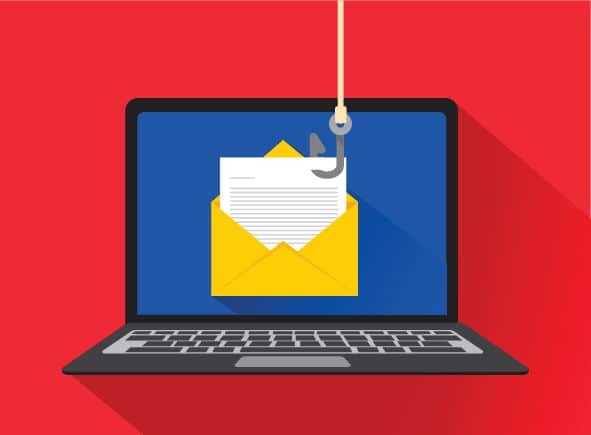Phishing attacks are one of the most prevalent and potentially dangerous threats businesses face online. They can result in severe consequences for companies whose employees fall victim to these scams, causing financial devastation, lack of consumer trust, and even legal ramifications.
According to the FBI, companies lost more than $4.2 billion in 2020 alone from phishing attacks. And cyber criminals target businesses of all sizes and industries, so you can’t assume your organization is immune to these scams.

Warning Signs of a Phishing Attack
The good news is that most phishing attacks come with similar warning signs. Knowing that you’re more likely than not to encounter a phishing attempt on your business, here are some signs that will help you identify a phishing attack.
Threats and Urgent Requests
Messages sent as part of a phishing attack typically convey a sense of urgency to compel the target to take some sort of action, like sending money or sensitive information, ASAP. The hackers will threaten negative action if information is not sent immediately; they may insist that you will lose access to your account, try to convince you that a hacker has already accessed your account, or even threaten legal action against you.
This fear tactic is so common that, according to studies on scam emails, these are some of the most common words used in a phishing email headline:
- Urgent/Important
- Request
- Payment Status
- Invoice Due
If you’ve received a message encouraging immediate action for anything, take a moment to carefully evaluate the situation before panicking or responding.
Spelling and Grammatical Errors
Though genuine businesses might make the occasional spelling or grammar error, phishing emails commonly contain multiple glaring mistakes. If you receive an email that is full of incorrect information, out-of-place and awkward wording, and spelling and grammatical errors, it’s likely a phishing attack.
Fake Domain Names
Often, a hacker will attempt to imitate a trusted business or person that the target is familiar with. In these instances, the domain name that the email address was sent from is often an obvious sign that something is fishy.
The scammer might try to spoof off a legitimate company address by using a similar domain name that could be mistaken as the company’s legitimate email—for example, “mircrosoft.com” or “microsoft.net”—hoping the discrepancy will not get noticed.
If you receive an unexpected email, check the domain name first to make sure it’s from a legitimate company and that it matches the email address you typically receive emails from when communicating with that organization.
Kinds of Phishing Attacks
Scammers use different techniques to try to steal information and money, including:
Email Phishing
This is the most widespread form of scamming, as it acts as a catch-all technique. Employee emails can sometimes be found on company websites or even guessed by combining names and the company domain, making email phishing accessible to insidious scammers.
Email phishing attacks to steal sensitive information via emails that appear to be from a legitimate business.
Spear Phishing
Where email phishing casts a wide net, spear phishing is extremely targeted, well-researched, and focused specifically toward one individual. Spear phishers may glean information from your social media profiles or other online sources to discover where you’re from, what types of businesses you shop at, where you work, who your friends are, and other information to then craft a message meant to deceive you.
The specificity used in spear phishing emails can make them harder to detect and easier for victims to fall prey.
Vishing
Vishing is short for voice phishing and involves a scam phone call as opposed to an email. The caller may pretend to be from a government agency, tech support, or another trusted organization and attempt to get personal information from you, including banking and credit card information.
Protect Against Phishing Attacks
To protect your organization from such substantial losses caused by phishing attacks, it’s vital to ensure all employees are, first, educated on how to detect a phishing attempt and actions to take when one is received; and, second, practicing secure and safe practices while online.
Ensuring your organization is properly protected against phishing attacks requires a multi-layered security strategy complete with employee security training, threat detection, anti-malware software, email filters, password protection, and more. Contact us today to work with our cybersecurity experts and give your business the very best protection.
We provide advanced security solutions to protect businesses like yours from phishers and other threats.
For more information, contact us online or call 866-572-2850 today.
